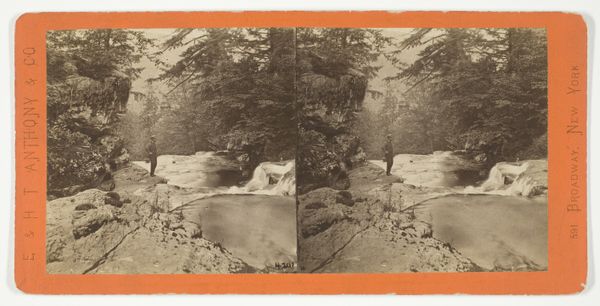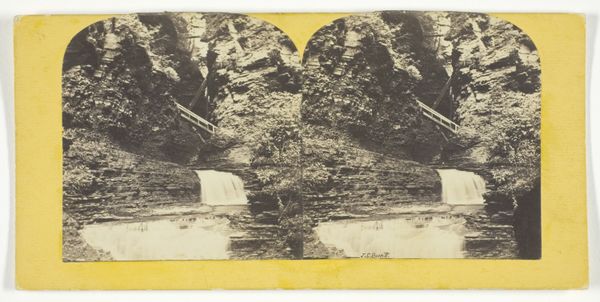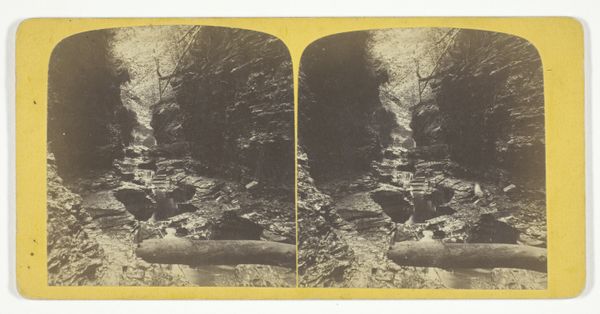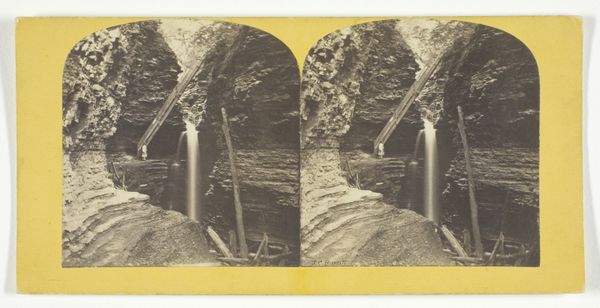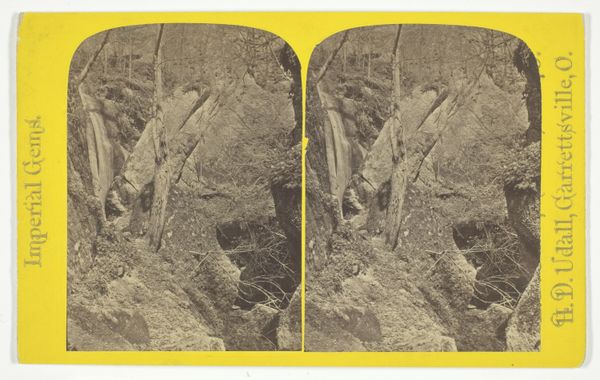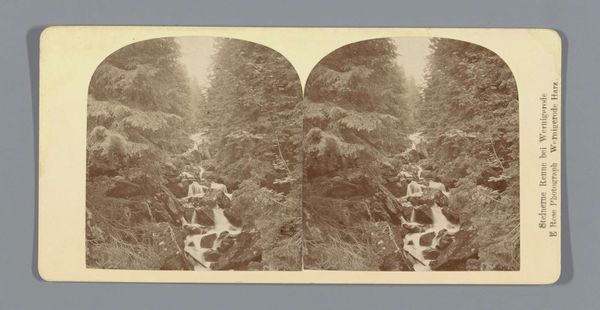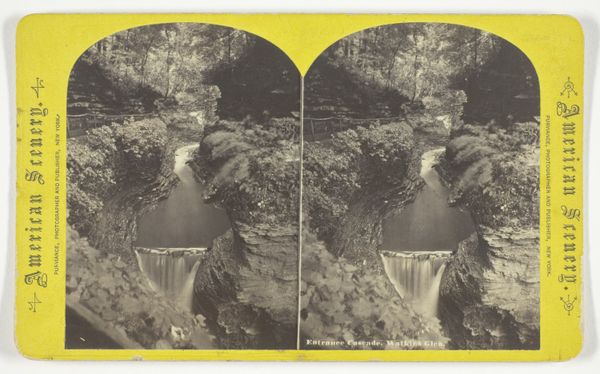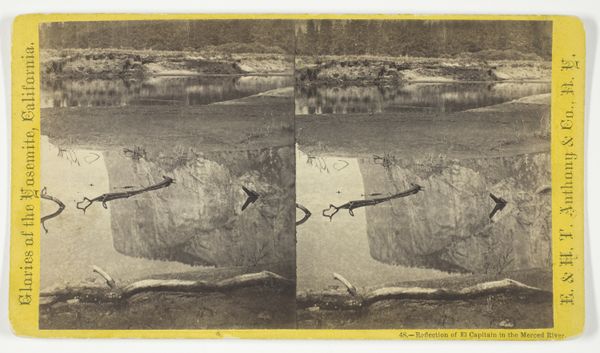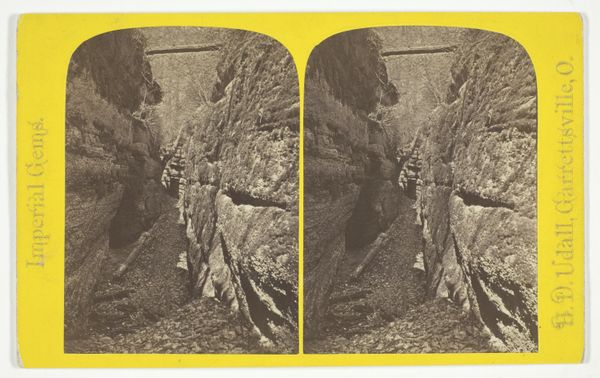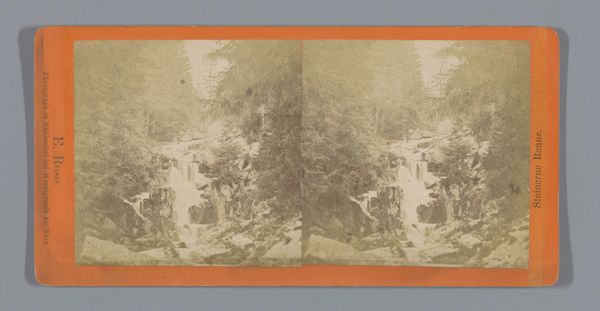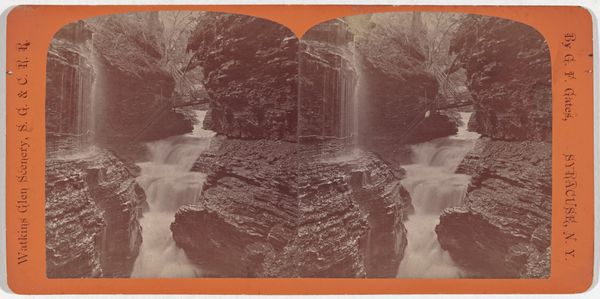
Dimensions: 10.7 × 7.9 cm (each image); 10.9 × 17.7 cm (card)
Copyright: Public Domain
Curator: Looking at this albumen print, I immediately feel a sense of precariousness. The composition, with its towering cliffs and narrow, man-made staircases, feels like a negotiation between the natural and the artificial. Editor: I agree; the contrast is definitely the first thing that strikes you. The photo, believed to have been captured sometime between 1860 and 1899, is entitled "Central Gorge and Jacob's Ladder". The photographic print on a card, showcases a ravine, most likely in upstate New York. Curator: Yes, these stereographs were incredibly popular ways of disseminating images, allowing the public to ‘visit’ these picturesque locations without physically traveling. Notice how the stairs almost cling to the rock face. It makes me wonder about the Victorian-era fascination with controlling and aestheticizing nature for public consumption. Editor: That tension you pointed out is quite interesting, because these types of images speak volumes about the culture producing and consuming them. They encouraged the burgeoning idea of wilderness tourism and access to nature but mediated by carefully constructed experiences like the steps and bridge showcased in this image. How ‘authentic’ is our connection to nature, the image seems to be asking? Curator: And whose nature is it? While these scenic spots were increasingly open to white middle-class tourists, one has to question who was excluded or displaced to create these seemingly ‘untouched’ landscapes. Also, how did these romanticized depictions of nature intersect with—or distract from—industrialization and urbanization taking place at the same time? Editor: Precisely. In addition to that, while Jacob's Ladder hints at the biblical ascent and the divine, the photograph itself, being mass-produced, makes it an earthly experience to enjoy within the material realm. Curator: It is fascinating how something as seemingly simple as a photograph of a waterfall can unravel a host of societal and environmental considerations. Editor: Indeed. And by understanding this, we can more clearly see how intertwined progress and exploitation, access and exclusion are within America's perception of landscape.
Comments
No comments
Be the first to comment and join the conversation on the ultimate creative platform.
